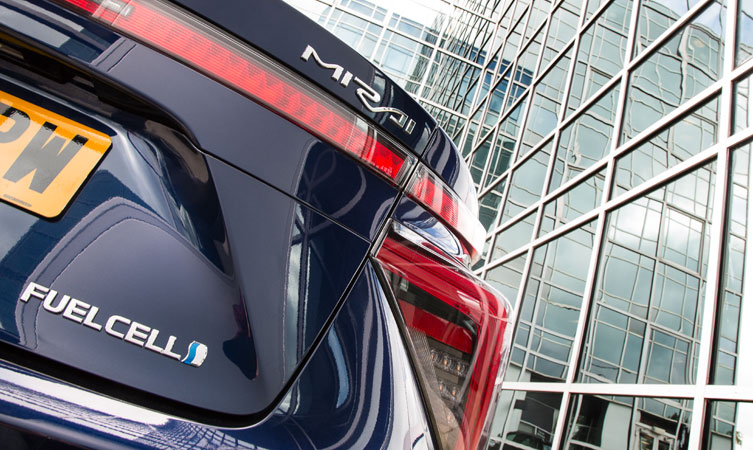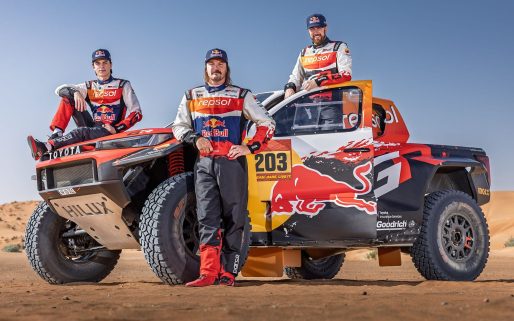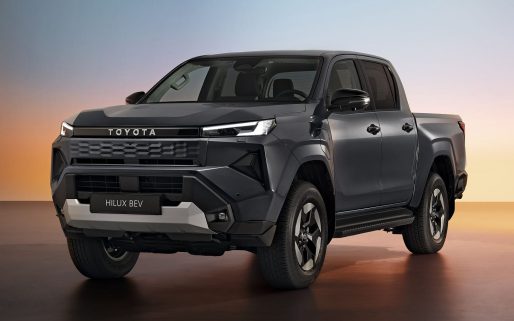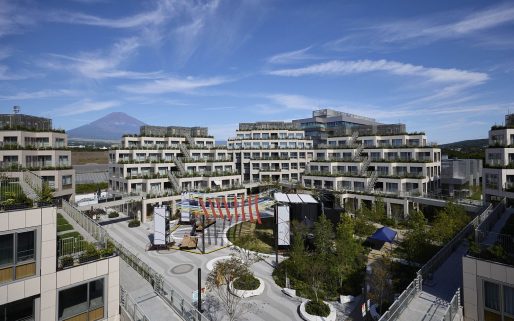Why does Toyota propose hydrogen fuel cell technology as a power solution for zero-emissions vehicles? And are hydrogen-powered cars viable? We look at reasons why Toyota is confident they are, and why hydrogen is the ideal source of clean energy.
Putting energy needs into context
Energy and transport sectors are being presented with huge challenges in decarbonising society and providing energy security, while simultaneously improving air quality and minimising environmental impact. The UK government has delivered a particular focus in this respect, targeting an 80% reduction in all greenhouse gases by 2050, compared to 1990 levels.
With numerous social, political and economic issues to consider, it is not possible for a single solution to meet all needs. However, the fundamental relationships between these issues and objectives are consistent across the globe.
Are hydrogen-powered cars viable – why hydrogen?
Hydrogen is the most abundant element in the universe and has the highest specific energy density of any non-nuclear power source. It is inexhaustible and non-toxic; it can be created using many sources, stored indefinitely and can be shipped relatively easily.
Millions of tonnes of hydrogen are produced and used without incident every year and we can now handle it more safely than fossil fuel. It is already being used as a power source in buildings, and in mobile applications such as electric cars, fork-lifts, ships and trains. Testing is even underway to produce hydrogen-fuelled aircraft.
Are hydrogen-powered cars viable – fuel production
Producing, compressing and dispensing hydrogen does consume some energy, but this can be combatted by using surplus renewable energy that might otherwise be wasted. Hydrogen is also a by-product of certain industries, some of which can create emissions, yet technologies and systems are now available to ensure that its production is free of emissions. Once produced, hydrogen is also efficient and cost-effective to distribute.
Interestingly, most new vehicle hydrogen refuelling stations create hydrogen on-site with electrolysis, using 100% renewable surplus energy. No deliveries are needed and there are no emissions from either the production process or the fuel’s consumption. These stations are containerised and only require water and power to operate. Power is supplied on green tariffs, or at some stations is sourced directly from solar or wind on-site.
Are hydrogen-powered cars viable – Toyota’s view
Toyota believes that there is currently no single solution to reducing vehicle emissions or meeting customer transport needs. It is about delivering the right vehicle at the right place and at the right time, so investments have been made in all areas in order to meet immediate, medium- and long-term needs throughout the world. Hydrogen forms an integral part of Toyota’s Beyond Zero campaign.
Learn more: What is the Toyota Environmental Challenge 2050?
In the shorter term, petrol-electric hybrids and plug-in hybrid vehicles look likely to dominate, while pure battery electric vehicles are viewed as a more expensive, niche solution. Fuel cells offer the greatest future potential but require significant investment and the use of advanced technology.
The Toyota Mirai is the world’s first full production hydrogen fuel cell saloon and winner of the World Green Car award in 2016. The first-generation Mirai can be driven for around 300 miles from a full 5kg tank of hydrogen. That quantity of fuel is produced from 50 litres of water, and in the course of driving that distance the car’s only emission will be 50 litres of water. Nothing is consumed. The whole process is simply a transfer of energy.
Early adopters of the Mirai included the Met Police and private hire firm Green Tomato Cars which both received fleet orders. Such growing confidence in hydrogen-powered transport has allowed Toyota to plan annual production of fuel cell vehicles to 30,000 units by the early 2020s.
Meanwhile, in Germany, ride-pooling start-up CleverShuttle has reported that its fleet of 45 Mirai models has accumulated more than 2.2 million kilometres of emission-free travelling within 24 months. While it took 15 months to reach the first million kilometres, CleverShuttle reached the second in just under ten months, proving that its service is increasing in popularity.
In considering the significance of Mirai, it is worth reflecting on the impact of Toyota’s hybrid technology. With more than 11.7 million petrol-electric hybrid vehicles sold worldwide since the introduction of the original Prius in 1997, and many other vehicle manufacturers adopting similar technologies, Toyota’s leadership is clear.
Hydrogen cars: the future
Thanks to its universal availability, Toyota believes that the long-term use of hydrogen is likely and its adoption will rapidly accelerate. The range of applications will increase and energy suppliers will use it as a fully renewable energy vector, enabling cheaper, more efficient power supply and vehicle refuelling.
The importance of hydrogen in the future was underlined by the formation of the Hydrogen Council, a global group bringing together senior executives from leading fuel, energy, manufacturing and mining businesses. These include Air Liquide, Alstom, Anglo American, BMW, Daimler, Engie, Honda, Hyundai, Kawasaki, Linde, Shell, Total and Toyota. Having committed to spend $5 billion in the next five years, the council’s intention is to co-ordinate and accelerate hydrogen investment and deployment in all sectors.
Although there are issues of customer acceptance that will take time to solve, there is an expectation that by the mid- to late-2020s we will see hydrogen power reach the mainstream – a significant shift in the energy sector brought about by growing economic, political and environmental pressure.
Article correct at the time of publication.





How many Hydrogen powered cars have Toyota sold to non-Toyota employees?
Hi there,
Thank you for getting in touch. There are specific practical and use considerations that may impact the Mirai ownership experience. We want to ensure maximum customer satisfaction and therefore the Mirai is only being sold directly by Toyota (GB) following full qualification of prospective customers based on journey type and proximity to refueling stations. We have sold 28 so far to private and fleet customers. We expect to see many more over the coming years.
Try making a 200 mile EV. It’ll be faster than a Prius or Prime
Hi there,
Thanks for getting in touch. You can view our electrification plans via this link:
https://mag.toyota.co.uk/electrification-across-entire-toyota-line-up-from-2025.
Thanks.
I live on the Isle of Man , it would be really good if we could have a refuelling plant here . We are only 86,000 population , spread mainly over 4 towns , Douglas , Ramsey , Castletown and Peel . I believe that there would be a huge support for such technology however we need to get the first refuelling station established .Mast families have 2 cars ,some even 3 , presently running on diesel and petrol so we have to go forward with this clean emission technology.
I am very excited by hydrogen fuel – I live in south east London- SE24. Where would I refuel?
Kind regards
Hi Hilary. We’re glad to hear that. There are currently five operational refuelling stations in and around London, with more planned this year. They are Cobham Services (M25), Heathrow Airport (Hatton Cross), Hendon, Rainham and Teddington. Find out more about Mirai here: https://www.toyota.co.uk/new-cars/new-mirai/landing.json
Waste of R&D Toyota… concentrate on batteries. Easy decision. EV L3 fast charging stations expanding exponentially (and slow outlets everywhere) Hydrogen stations are nonexistent.
1:00 gathering hydrogen from Electrolysis is horribly inefficient, not s inexhaustible from all the electricity needed to do that.
1:22 , Um, electricity is easy to convey over long distances. Line losses is only around 5% on the power lines.
1:35 , How much fuel will be needed to transport the Hydrogen from the South to the North?
Hydrogen station availability may eventually go exponential, but EV charging stations exponential curve is so far ahead, there is no way hydrogen will be the norm except for heavy-duty applications such as generator fuel on plugin-hybrid trucks.
Unless, certain materials for batteries become scarce and no good alternative is found. Fuel cells use specialized elements too.
Hi there,
Thanks for getting in touch.
Toyota believes that there is currently no single solution to reducing vehicle emissions or meeting customer transport needs. Therefore, we are investing in multiple different solutions including hydrogen and electric vehicles. It is about delivering the right vehicle at the right place and at the right time, so investments have been made in all areas in order to meet immediate, medium- and long-term needs throughout the world.
You can find hydrogen refuelling stations in the UK:
Aberdeen
Cobham Services (M25)
Heathrow Airport (Hatton Cross)
Hendon
Rainham
Sheffield (Rotherham)
Swindon
Teddington
Beaconsfield Services (M40)
The Toyota Mirai is the world’s first mass-produced hydrogen fuel cell vehicle. It has recently become the first hydrogen fuel cell electric car to drive the length of Britain from John O’Groats to Land’s End, in the process emitting nothing but a few litres of pure water along the way. You can read more here: https://mag.toyota.co.uk/mirai-marathon-maps-uk-hydrogen-fuel-future.
The Toyota Mirai is also now being used by the Metropolitan Police and Green Tomatoes, read more here: https://mag.toyota.co.uk/mirai-met-police and https://mag.toyota.co.uk/50-toyota-mirai-join-green-tomato-cars-fleet.
Thanks.
Hi there, I live just south of Aberdeen, Scotland where there is a station. I contacted Toyota looking to find out a price etc but never got a reply. Come on Toyota.
Maurice Coull
Hi Maurice,
Thanks for your interest in the Mirai. We apologise for a delay in your reply, we will look into this with the alternative fuels team.
Thanks for your patience and we hope you hear from them soon.
Nobody’s said/asked how much this new vehicle/technology is going to cost per vehicle? BEV vehicles are still over priced and they have been going a while now ! Still there’s the proverbial ranger anxiety and a severe shortage of charge points and information as to how to use them M
One of the issue is supply of hydrogen. Toyota is a major manufacturer of cars and user of energy. You should be signing a Corporate PPA for your manufacturing operations in Europe, and in countries that have curtailed wind (like Germany) specify that they have to have a electrolyser on the wind site. This is similar to how we combined the transport and energy sectors in South Australia through our roadmap; with our Japanese friends. This will not only solve the availability and range anxiety issues (COO), but give you further green credits (CFO), but improve your production facilities bottom line (CFO).
An exciting development! So glad to see the first hydrogen filling station being built in Palmerston North.
I believe the negative impact to the environment by strip mining precious metals for the manufacture of new batteries is not the right way to go. Mining operations are destroying the planet and the abundance of hydrogen on our planet make this a no brainer.Hydrogen Refueling stations powered by solar, hydro, and wind would bring the carbon footprint to zero. Let’s get it right by reducing cost of new cars to consumers. If you are going to charge $40K then you are DOA. Please make an inexpensive environmentally friendly car for under $20K and you will see sales that will kill eCars.
— Can we have an update to this page by Toyota? It appears to be getting dated.
Hi AT, thanks for your feeback.
We’ll pass the update request along to our content team.
Thanks,
Toyota UK